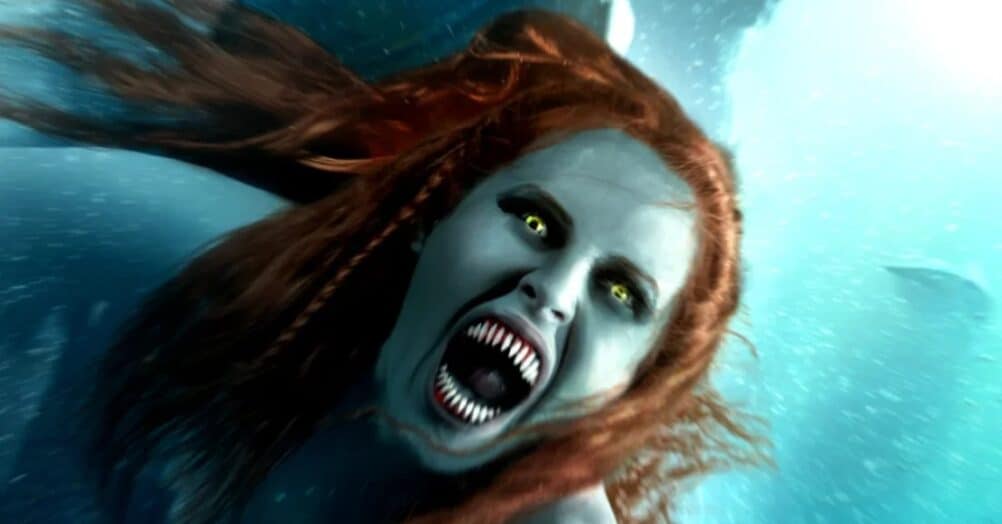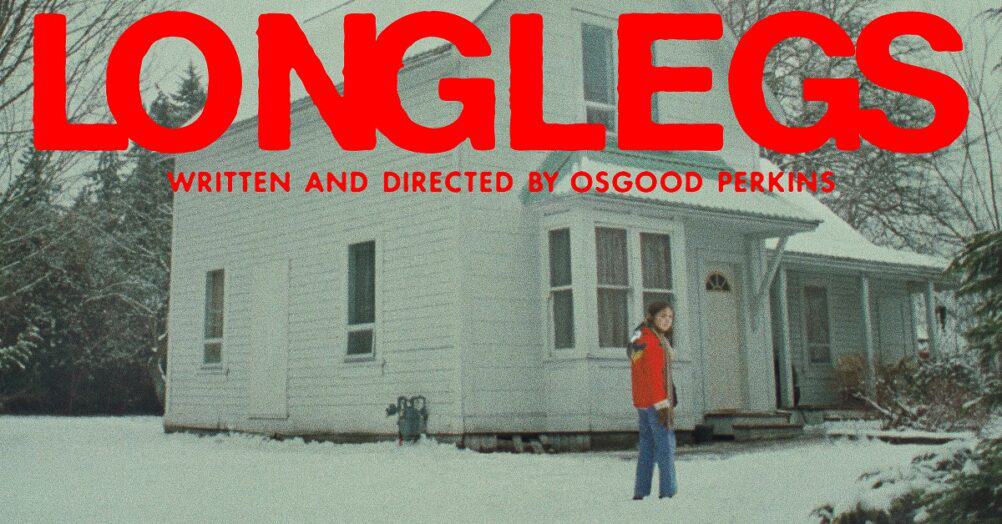
Namora #1 (One-Shot) (Marvel Comics, $3.99)
By Devon Sanders
When at the end of a comic you find yourself thinking, “God, I wish there were more comics like this on the shelves,” you know more than a couple of someones did something right. Namora #1 is a cleverly written, angst-free, beautifully drawn comic featuring a heroic blonde, half-human/half-Atlantean ruler of the seven seas. That’s right. THIS is happening. In a Marvel comic. Namora, simply, is the Aquaman comic I wish we were reading.
From the opening sequence on, writer Jeff Parker (Atlas) gives you a self-assured hero who knows exactly what to do and doesn’t hesitate to do so. Parker’s dialogue is clever and displays a more than deft handling of humor while artist Sara Pichelli (X-Men: Pixie Strikes Back) provides absolutely stunning visuals and inspired layouts. Mark my words, Sara Pichelli is a name you’re going to want to know. With a high sense of “Wow,” Namora #1 stands completely on its own as a comic well worth your time and money.





 The Complete D.R. and Quinch (2000 AD, $17.99)
The Complete D.R. and Quinch (2000 AD, $17.99)
by Adam Prosser
Everyone has to start somewhere. For a generation of British comics writers and artists, that somewhere was 2000 AD, the epochal punk-rock SF comics magazine. In giving a start in the comics industry to such luminaries as Neil Gaiman, Grant Morrison, Brian Bolland, Chris Cunningham, Peter Milligan, Mark Millar, Garth Ennis, Dave Gibbons, Kevin O’Neill and Bryan Talbot, 2000 is probably the single biggest influence on American comics of the last 50 years, and it’s not even American. And even if you ignore every name on that list, the magazine would still go down in history simply for introducing the world to a certain Alan Moore.
Moore stepped off the boat from England (note: this may not literally have happened) with scary levels of talent already in place, reinventing comics writing almost overnight with his run on Swamp Thing and a little miniseries called Watchmen. His popularity led to reprints of some of his British comics work like Marvelman (redubbed Miracleman in America for legal reasons) and V For Vendetta, the latter of which had been unfinished at the time and was now given a proper conclusion. And here, too, Moore was clearly writing at a previously unseen level of quality for American comics, so that to people from across the pond he seems to have sprung fully formed from the head of Zeus, or something. To really see Moore ’s development as a writer, you have to go back to 2000, where Moore had several recurring features. For instance, The Ballad of Halo Jones sees him experimenting for the first time with long-form, carefully-planned narratives, and the results are a brilliant success. With D. R. and Quinch Moore was attempting more of an old-fashioned recurring humor feature, and the results are…less successful.
Of all the many things Moore is acclaimed for, “being funny” isn’t one of them. That’s not to say he can’t be funny, of course—even his darkest work displays a level of wit, and his later work on Tomorrow Stories, a collection of short stories featuring recurring characters, was often highly amusing. But even in that (highly underrated) book, Moore’s tendency for clockwork plotting, thematic complexity and narrative gimmicks often ended up getting in the way of the humor.
With D.R. and Quinch, Moore was just beginning to spread his wings, and the setup is therefore less complicated, which actually helps things in some ways. The story’s about a pair of anarchic alien college students, Waldo “D.R.” Dobbs (the “D.R.” is for “Diminished Responsibility”) and Ernest Quinch, who in their debut story meddle in Earth history for the sake of a prank and end up destroying the planet. From then on they get roped into various satirical situations, running afoul of D.R.’s psychotic ex-girlfriend Chrysopraxia (he’s the one who drove her psychotic, of course), getting drafted into a war (which they started), and trying to make it in Hollywood. Space Hollywood . The general tone is that of an 80s college romp (the characters are based on a pair of National Lampoon characters, O.C. and Stiggs), but with more of a violent, punk-rock attitude and a big dose of satire direct from Moore .
Unfortunately, even with this straightforward story, Moore seems less interested in belly laughs and more in experimenting with the medium. The humor here is broad and kind of clumsy, relying on plot twists that are every bit as unnatural as the kind of thing you’d see in a “Revenge of the Nerds” or “Police Academy” flick, and the basic dialogue and tenor of the jokes is very much in keeping with Mad magazine. The short format (every installment is five pages long) means there isn’t much time even to develop screwball plots. The Hollywood satire, which sprawls across several installments, actually does manage to build up some comic momentum (I chuckled several times) but the series essentially ended there for various reasons, which include tension between Moore and the artist, Alan Davis.
Davis’ artwork, by the way, is one of the most compelling reasons to pick up this book—his characters are expressive and memorable, and even cheesy Hollywood caricatures take on (alien) life of their own when Davis draws them. His drawings of D.R., especially, inject a level of intensity and punk verisimilitude that’s otherwise lacking from the story. It’s always been strange that Alan Moore, punk anarchist antiauthoritarian type that he is, produces such slick and cold scripts that seem so out of line with his personality, and D.R. and Quinch seems to have fallen prey to this tendency of his. It’s worth picking up if you’re a Moore completist like me, but otherwise, stick to his later fare, where he had a better sense of his strengths and limitations.



Zatanna #2 (DC, $2.99)
By Jeb D.
I realize I just reviewed this book, but I think it needs the attention. Not so much for the plot: as I said last month, it’s kind of an uncomfortable muddle of magic and detection, and in issue #2 Dini and Roux have evidently decided to run a clearout play for the magic mumbo-jumbo aspect of things, attacking Zatanna in her dreams, with guilt and double-dealing and surprise twists.
No, that’s all well and good. Whatever. What I want to know is: just what the hell is that on Zatanna’s chest? Yeah, I know DC wants us drooling over an impressive pair of bazongas, but let’s be serious: whatever that is, it extends about three inches to either side of her torso and down almost to her navel. This goes beyond cantaloupe smuggling into the realm of the outright silly. At least a guy like Frank Cho can draw ridiculous breasts that look like actual portions of a woman’s anatomy.


 Punisher MAX #8
Punisher MAX #8
Jason Aaron continues his Punisher/Kingpin/Bullseye story with its bloodiest, most harrowing chapter yet, but one that digs deeply into the warped psychology behind these nominally two-dimensional characters, once more cementing his reputation as one of America’s finest crime writers, regardless of medium. And Steve Dillon continues to refine his style on the book. It feels less like a replay of his brilliant black-comic Punisher outings with Garth Ennis: it’s even grimmer, the violence is never celebratory. And violence there is aplenty, physical, sexual, mental, emotional.
This issue is certainly not the jumping-on point, I’m sure the completed story will read great in trade. But I just had to salute Marvel’s marketing department for tossing a full-page ad for kids’ superhero clothing in between two pages of Frank Castle cutting pieces off a crooked cop’s body and nailing them to the wall. Well, at least it wasn’t an ad for Twinkies.




 X-Men: Legacy #237 & Uncanny X-Men #525 (Marvel, #2.99)
X-Men: Legacy #237 & Uncanny X-Men #525 (Marvel, #2.99)
By Jeb D.
We all do know that “Nimrod” was a great Biblical hunter, right? Man of power, big noise in that whole Tower of Babel urban renewal program. So how and when did the name “Nimrod” come to be synonymous with… oh, I don’t know–nerd? Maybe it’s a cultural thing: after all, Brit Mike Carey is one of the writers that is trying to imbue the X-Men’s latest foes with a name that would have struck terror into the hearts of the Babylonians. Unfortunately, we Yanks (and/or Green Day fans) can’t help but giggle at phrases like “the Nimrod invasion,” “Nimrods emerging from the temporal sphere,” and “the Nimrod horde,” that we get in X-Men: Legacy #237.
That’s the kind of thing that occupies your mind when you read a comic illustrated by Greg Land.
 There’s also Nimrods aplenty over on the Uncanny X-Men corner. There, it’s Jeff Parker providing the last-stand action and ill-tempered angst. Meanwhile, Terry and Rachel Dodson ensure that every X-Woman has the appropriately curvy butt and pouty lips (even Sue Richards gets into the act).
There’s also Nimrods aplenty over on the Uncanny X-Men corner. There, it’s Jeff Parker providing the last-stand action and ill-tempered angst. Meanwhile, Terry and Rachel Dodson ensure that every X-Woman has the appropriately curvy butt and pouty lips (even Sue Richards gets into the act).
I’m sorry, I suppose there’s a certain shooting-fish-in-a-barrel quality to ragging on the latest interminable X-crossover. But at least the last one (or was it the one before already?) brought the change of scene to San Francisco, and sense of place that meshed nicely with the storytelling; they’re still there, which is nice, but the latest innovation seems to be the umpteenth variation on “Days of Future Past.” Not exactly what I’d consider progress.
SCORE FOR BOTH:


















Follow the JOBLO MOVIE NETWORK
Follow us on YOUTUBE
Follow ARROW IN THE HEAD
Follow AITH on YOUTUBE